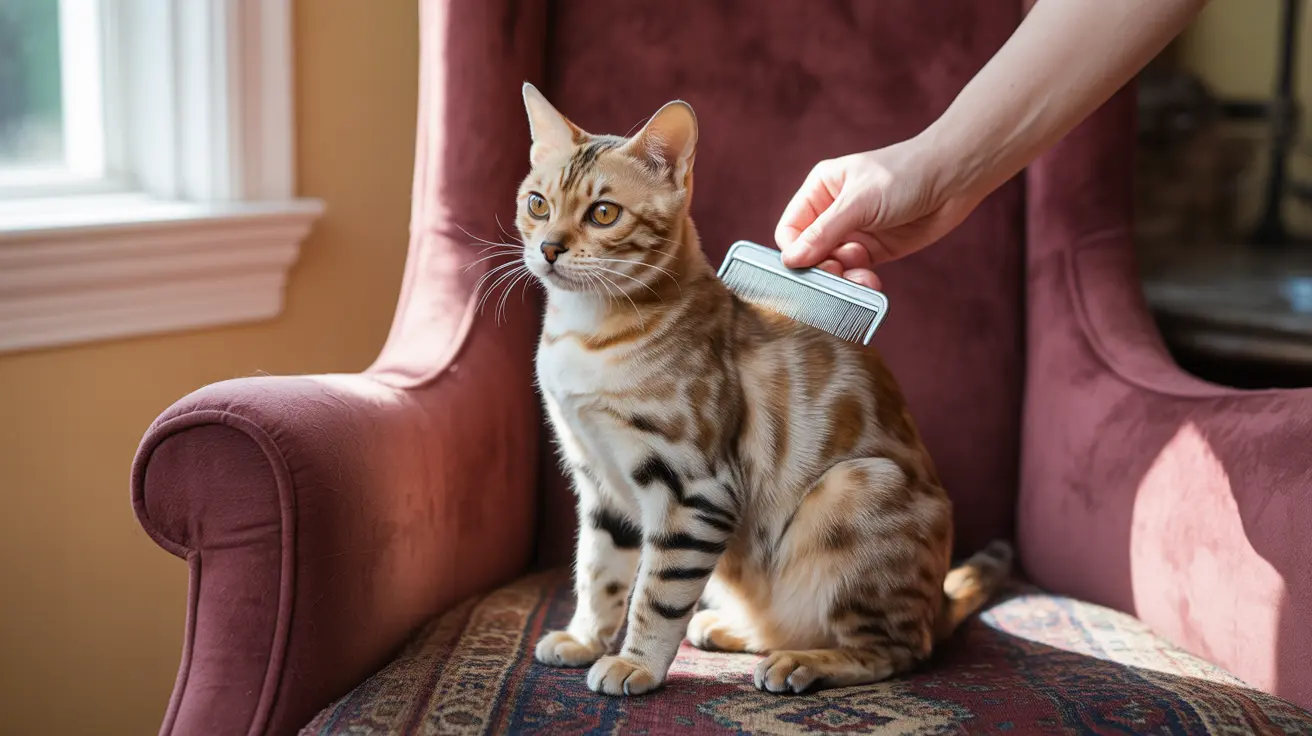Introduction
Discovering how to tell if your indoor cat has fleas is crucial for maintaining your pet's health and comfort. Despite never stepping outside, indoor cats can surprisingly become hosts to these persistent parasites. This comprehensive guide will help you identify the signs of flea infestation, understand how indoor cats get exposed, and learn effective prevention strategies.
Early detection is key to preventing a minor flea problem from becoming a full-blown infestation. Let's explore the telltale signs and proven methods to protect your indoor feline companion from these troublesome pests.
Common Signs of Flea Infestation in Indoor Cats
Physical Signs
The most obvious indicators of fleas on your indoor cat include:
- Excessive scratching, particularly around the neck and tail base
- Visible dark specks in the fur (flea dirt)
- Small, reddish bite marks on the skin
- Hair loss or bald patches
- Scabs or hot spots from excessive scratching
Behavioral Changes
Watch for these behavioral indicators that might suggest a flea problem:
- Increased grooming frequency
- Restlessness or irritability
- Avoiding certain areas of the house
- Changes in sleeping patterns
- Unusual aggression when touched in certain areas
How Indoor Cats Get Exposed to Fleas
Even strictly indoor cats can encounter fleas through various sources:
- Through other pets that go outdoors
- Via human clothing and shoes
- From visiting animals or guests
- Through window screens or open doors
- From newly purchased furniture or carpets
Effective Detection Methods
Using a Flea Comb
A fine-toothed flea comb is your best tool for detection:
- Part your cat's fur and comb through, especially near the tail base
- Check the comb for live fleas or flea dirt
- Place any black specks on a white paper towel
- Add a drop of water - if it turns reddish-brown, it's flea dirt
The White Sheet Test
This simple test can reveal an active infestation:
- Have your cat lie on a white sheet for 30 minutes
- Check for black specks that fall onto the sheet
- Wet any specks to confirm if they're flea dirt
Prevention and Treatment Strategies
Once you've confirmed fleas on your indoor cat, take these steps:
- Consult your veterinarian for appropriate flea treatments
- Treat all pets in the household simultaneously
- Vacuum thoroughly and frequently
- Wash pet bedding in hot water weekly
- Consider professional pest control for severe infestations
Frequently Asked Questions
How can I tell if my indoor cat has fleas without seeing live insects?
Look for flea dirt (black specks), excessive scratching, and small red bite marks on your cat's skin. Using a flea comb and the white sheet test can help confirm an infestation even when live fleas aren't visible.
What are the common signs that indicate my indoor cat might have a flea infestation?
Key signs include excessive scratching, visible flea dirt, hair loss, scabs, increased grooming, and behavioral changes like restlessness or irritability. You might also notice small red bite marks on your cat's skin.
How do indoor cats get fleas even if they never go outside?
Indoor cats can get fleas through other pets, human clothing and shoes, visiting animals, open windows or doors, and even new furniture. Fleas can survive indoors year-round and don't need outdoor access to infest your home.
What is the best way to check for fleas on my indoor cat at home?
Use a fine-toothed flea comb to check your cat's fur, focusing on the neck and tail base areas. Place any black specks on a damp white paper towel - if they dissolve into reddish-brown stains, they're flea dirt, confirming an infestation.
How can I effectively prevent and treat fleas on an indoor-only cat?
Use veterinarian-recommended flea preventatives year-round, even for indoor cats. Regular vacuuming, washing pet bedding in hot water, and treating all pets in the household simultaneously are essential for effective flea control.
Conclusion
Understanding how to tell if your indoor cat has fleas is essential for maintaining your pet's health and comfort. Regular monitoring, proper prevention methods, and quick action when signs appear will help keep your indoor cat flea-free. Remember to consult with your veterinarian for the most appropriate treatment plan for your specific situation.






